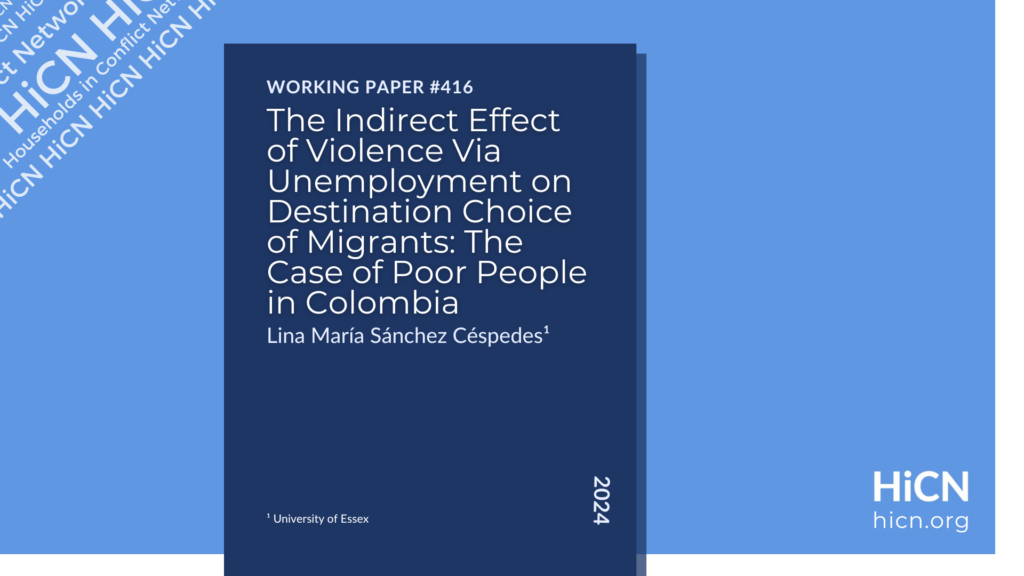
Areas with violence problems have traditionally been considered the origin of migration flows but not their destination. We propose that the effect of violence on the choice of a destination depends on economic incentives and pre-violence exposition. High levels of violence in a location lowers the utility of migrating to that location. This is the direct effect of violence. However, violence may also eject people, decreasing labour supply, making a municipality attractive to migrants. This is the indirect effect. To estimate both effects, we apply: “The restricted mediation model with instrumental variables”. Violence is the “treatment”, unemployment is the “mediator” and the number of migrants from an origin to each destination is the “final outcome”. We estimate this model for 1091 sender municipalities. We find that municipal unemployment decreases as the homicide rate increases. For some municipalities, the indirect effect of violence via unemployment attenuates, cancels, or even exceeds its negative direct effect. We find migration flows toward municipalities with high levels of violence and unemployment. The municipalities where we observe this behaviour belong to manufacturing clusters or to regions dedicated to produce oil, coal, and coca, among others.